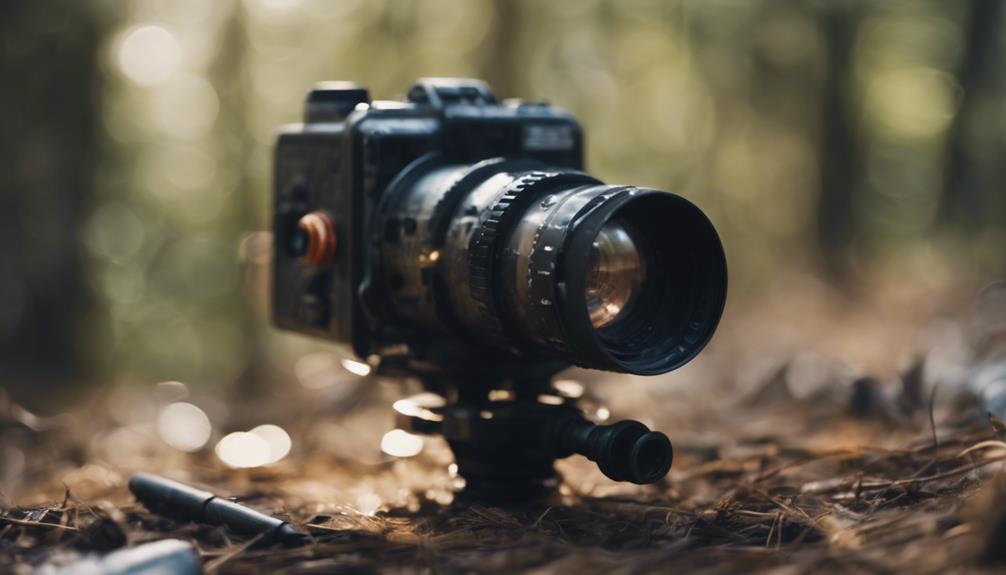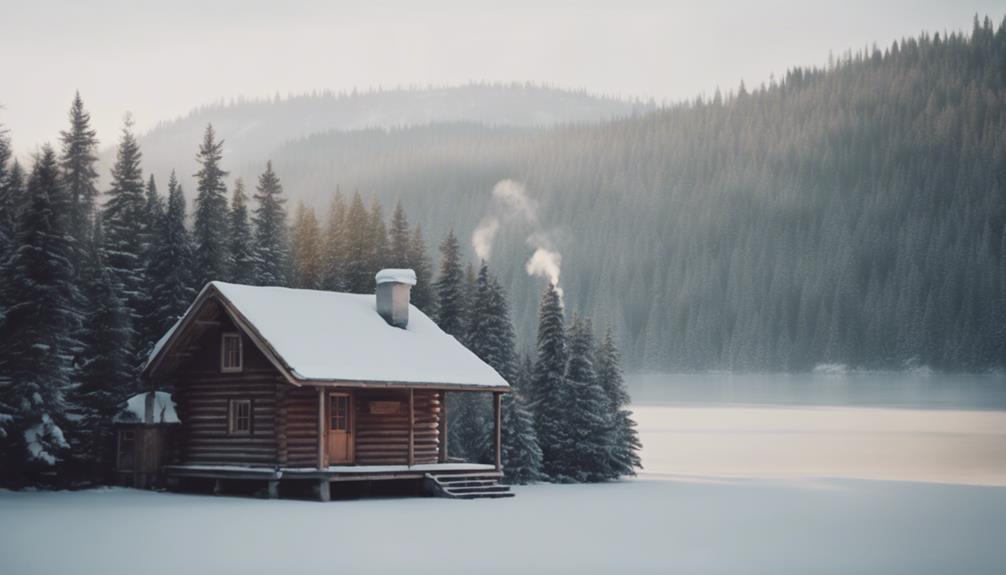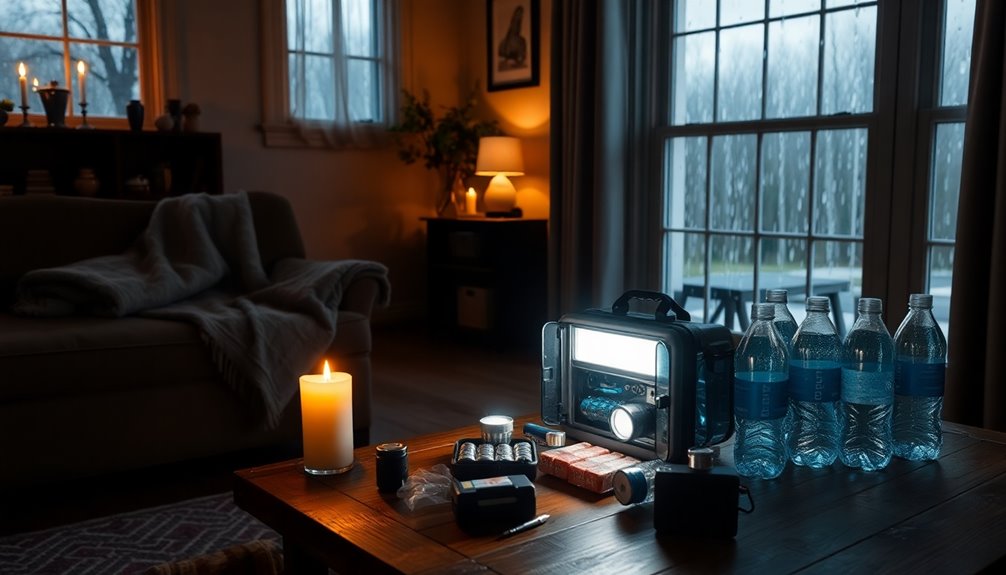You're about to enter a world where self-reliance meets emergency preparedness. Preppers are individuals from diverse backgrounds who proactively prepare for disasters, natural or man-made, by stockpiling supplies, building shelters, and acquiring self-defense skills. They focus on resilience, being proactive, not reactive, in ensuring survival and well-being. With millions worldwide, preppers prioritize self-reliance, food storage strategies, emergency fund planning, and shelter security. They believe in taking personal responsibility for survival, acquiring essential skills, and preparing for potential catastrophes. As you explore this world, you'll uncover the philosophy, values, and practices that drive the prepper movement, and learn how it's evolving in response to global uncertainty.
Key Takeaways
- Preppers are individuals focused on self-reliance, self-sufficiency, and emergency preparedness to ensure survival and well-being in uncertain times.
- The prepper movement is driven by a desire for personal responsibility and proactive preparation for potential disasters, natural or man-made.
- Preppers engage in various activities, including stockpiling supplies, building shelters, and acquiring self-defense skills to build resilience.
- The movement is diverse, with one-third of U.S. adults identifying as preppers, and has gained global popularity, particularly among Gen Z individuals.
- At its core, the prepper philosophy emphasizes personal responsibility, self-reliance, and proactive preparation for a wide range of potential catastrophes.
Defining the Prepper Movement
As you explore the world of prepping, it's important to recognize that preppers aren't just eccentric individuals stockpiling supplies, but rather, they're proactive individuals taking deliberate steps to safeguard their survival and well-being in the face of uncertainty.
The prepper movement is built on the principles of self-reliance, self-sufficiency, and emergency preparedness. Preppers focus on developing resilience in the face of potential disasters, whether natural or man-made, and even societal collapse.
They engage in activities like stockpiling supplies, building shelters, and acquiring self-defense skills to enhance their preparedness. By doing so, they're able to take control of their own safety and well-being, rather than relying on external authorities.
This movement has gained significant popularity globally, with millions of individuals from diverse backgrounds joining the ranks. At its core, the prepper movement is about being proactive, not reactive, and taking deliberate steps to ensure one's survival and well-being in the face of uncertainty.
History of Survivalism

Your journey into the history of survivalism begins with the tumultuous mid-20th century, when fears of nuclear war and government distrust sparked a grassroots movement that would eventually evolve into the modern prepper movement. The Cold War era saw the rise of civil defense programs, promoting shelters and food storage as essential survivalist measures. Notable figures like Howard Ruff and Colonel Jeff Cooper contributed to the promotion of survivalist ideas, shaping the movement's core beliefs.
| Decade | Key Events/Developments |
|---|---|
| 1930s-1950s | Emergence of survivalism due to government policies, nuclear threats, and apocalyptic writings |
| 1960s | Individual preparations for emergencies gain momentum |
| 1970s-1980s | Survivalist literature provides guidance on survival tactics, preparation, and self-reliance |
| 1990s-present | Survivalism evolves into a social movement, with individuals and groups preparing for emergencies of varying scales |
As a prepper, understanding the history of survivalism is important in grasping the core principles and values of the movement. From individual preparations to a full-fledged social movement, survivalism has come a long way, driven by the desire for self-reliance and preparation in the face of uncertainty.
Prepper Demographics Uncovered

Delving into the demographics of the prepper movement reveals a diverse and growing community, with a surprising one-third of U.S. adults identifying as preppers. You might assume that preppers are a specific type, but the reality is that they come from all walks of life. Notably, Gen Z individuals are the most likely age group to engage in prepping activities, indicating a growing interest in self-reliance among younger generations.
The movement isn't limited to the U.S., as there's a growing global interest in prepping. In Europe, for instance, many preppers distrust their governments' crisis management abilities, contributing to the rise in prepping. The global survival tools market is projected to reach $2.46 billion by 2030, a clear indication of this growing interest.
FEMA reports a 50% increase in individuals adopting self-reliant prepping practices from 2017 to 2020, further solidifying the movement's growth. When exploring the survivalist movement, it's crucial to understand that preppers aren't a monolithic group, but rather a diverse community united by a shared interest in being prepared for the unexpected.
Common Preparations and Practices

As you explore the world of prepping, you'll notice that common preparations and practices are essential to a survivalist's strategy.
You'll want to focus on building a solid foundation, which includes food storage strategies, emergency fund planning, and shelter and security measures.
Food Storage Strategies
When stockpiling food for emergencies, preppers prioritize non-perishable items that can sustain them for extended periods, often opting for bulk quantities of staples like canned goods, rice, and pasta. These items have a long shelf life, making them ideal for food storage.
In addition to these basics, some preppers invest in freeze-dried foods and dehydrated meals, which can provide essential nutrition during crisis situations. To guarantee the freshness of their stored food, preppers employ food rotation systems, using older items first to prevent wastage.
They also include essential items like cooking fuels, water purification tablets, and vitamins in their plans to cover all aspects of nutrition and sustenance. To prolong the shelf life of their stored food, preppers use strategies like vacuum sealing, Mylar bags, and oxygen absorbers.
Emergency Fund Planning
You typically establish an emergency fund to cover unexpected expenses during crises, such as job loss or medical emergencies, thereby guaranteeing financial stability in times of need. As a prepper, you understand the importance of having a financial safety net to fall back on during unexpected events. Your goal is to save 3-6 months' worth of living expenses in your emergency fund, which will help you avoid accumulating debt or relying on external assistance during emergencies.
Here's a breakdown of what you should consider when building your emergency fund:
| Aspect | Considerations |
|---|---|
| Amount | 3-6 months' worth of living expenses |
| Purpose | Cover unexpected expenses during crises |
| Benefits | Guarantees financial stability, avoids debt and external assistance |
| Priority | High priority in overall financial preparedness strategy |
Shelter and Security
However, when it comes to preparing for emergencies, you'll find that shelter and security are top priorities for preppers. They understand that having a safe place to go during a disaster is essential. That's why many preppers fortify their existing structures or build shelters to provide protection.
You might install alarm systems, reinforce doors and windows, and secure perimeter defenses to make sure your shelter is secure. Some preppers even invest in underground bunkers or safe rooms as a last resort during disasters. These hidden retreats can provide a sense of security and comfort when everything else seems uncertain.
To further enhance security, preppers often stockpile weapons, ammunition, and self-defense tools. This way, they're prepared to protect themselves and their loved ones from potential threats. You might also create hidden storage spaces within your shelter to store emergency provisions and supplies.
Philosophy Behind the Preppers

At the heart of the prepper movement lies a steadfast philosophy that emphasizes personal responsibility, self-reliance, and proactive preparation for survival in the face of uncertainty.
As you explore the world of preppers, you'll discover that their philosophy centers around taking personal responsibility for survival in emergencies. They believe in being self-reliant and self-sufficient in preparing for disasters, rather than relying on external aid.
Preppers advocate for acquiring essential skills like first aid, food preservation, and self-defense to make sure they're equipped to handle unexpected situations. Their philosophy emphasizes the importance of being prepared for a wide range of potential catastrophes, from natural disasters to societal collapse.
By taking proactive steps to prepare, preppers aim to increase their chances of survival and thrive in the face of uncertainty. This philosophy is rooted in the belief that societal collapse or disruptions are inevitable, making it important to be prepared and take control of your own survival. Understanding prepper lifestyle involves recognizing the importance of self-sufficiency, resource management, and adaptability in the face of crises. Preppers often stockpile essential items such as food, water, and medical supplies, while also developing survival skills like first aid and basic agriculture. Through this approach, they aim to mitigate the risks posed by economic instability, natural disasters, or other unforeseen disruptions.
Links to Other Movements

TEXT:
Prepare a list of ingredients needed for the recipe.
Wash and chop all vegetables.
Gather all necessary cooking utensils.
Follow the step-by-step instructions for cooking.
Remember to preheat the oven before baking.
Check the recipe for any additional tips or variations.
Enjoy your delicious homemade meal!
Off-Grid Communities Rise
The rise of off-grid communities has become a significant trend among preppers seeking self-sufficiency and independence from mainstream society. You're likely to find these communities prioritizing renewable energy sources, sustainable living practices, and organic farming to guarantee long-term survival. By living off-grid, preppers can disconnect from public utilities and reduce their reliance on external resources.
These communities often emphasize communal living, sharing resources, and fostering a sense of community resilience. You'll find preppers in off-grid communities focused on building resilient infrastructure, developing survival skills, and preparing for a wide range of potential crises.
Here are three key aspects of off-grid communities:
- Renewable energy sources: Preppers in off-grid communities often rely on solar, wind, or hydro power to generate electricity.
- Sustainable living practices: Organic farming, composting, and recycling are common practices in off-grid communities, reducing waste and promoting self-sufficiency.
- Communal living: Off-grid communities often share resources, skills, and knowledge, fostering a sense of community resilience and cooperation.
In these communities, you'll find preppers working together to create a more sustainable, self-sufficient way of living.
Environmental Activism Roots
You may not immediately associate prepping with environmental activism, but the two movements share a common thread – a desire to minimize reliance on modern systems and promote sustainable living.
As you explore the world of prepping, you'll notice that many preppers are passionate about environmental activism. They believe in self-sustainability and reducing their reliance on modern systems, which aligns with the values of environmental activism.
You'll find that many preppers engage in practices like home gardening, composting, and renewable energy to minimize their environmental impact. These efforts not only reduce their carbon footprint but also promote sustainable living.
By embracing conservation, recycling, and environmental stewardship, preppers are taking concrete steps towards a more environmentally conscious lifestyle.
The connection between prepping and environmental activism highlights a shared concern for sustainable living and resilience in the face of environmental challenges. By exploring these commonalities, you'll gain a deeper understanding of the prepper movement and its links to environmental activism.
Sustainable Living Ties
Embracing sustainable living practices, preppers forge connections with like-minded movements, from environmentalism to punk ideology, that share their passion for autonomy and self-reliance.
As you explore the world of prepping, you'll notice ties to environmental sustainability, off-grid technology, and traditional skills like bushcraft. These connections stem from a shared commitment to self-sufficiency and autonomy.
Here are three key areas where preppers intersect with other movements:
- Home gardening and food preservation: Preppers often adopt practices like canning, preserving, and home gardening to reduce reliance on external systems.
- Off-grid technology and DIY ethics: Preppers' focus on self-sufficiency leads them to adapt off-grid technology and DIY approaches, echoing the punk movement's emphasis on autonomy.
- Traditional skills and bushcraft: By learning traditional skills like bushcraft, preppers connect with a broader movement that values self-reliance and environmental sustainability.
These ties demonstrate that prepping isn't just about preparing for disasters, but also about embracing a lifestyle that promotes autonomy, self-sufficiency, and environmental responsibility.
Misconceptions and Stereotypes

Stereotypes and misconceptions surrounding preppers have led many to view them as extremists or conspiracy theorists, but the reality is that most are ordinary individuals who simply want to be prepared for emergencies.
You might assume that preppers are hoarders, stockpiling supplies in their basements, but this couldn't be further from the truth. In reality, preppers focus on practical preparedness, not doomsday prophecies.
Another misconception is that preppers are isolated or anti-social, but the prepping community is built on mutual support and a strong sense of camaraderie.
You might think preppers are paranoid, but their preparations are based on real-world risks and scenarios, not irrational fears.
Misunderstandings about preppers can lead to stigma, but their emphasis on self-reliance and readiness for emergencies is grounded in practicality and responsibility.
Preparing for Scenarios

Beyond misconceptions, the reality of prepping lies in preparing for a wide range of potential scenarios, from natural disasters to economic collapse, and it's this proactive approach that sets preppers apart.
As a prepper, you're not just preparing for a single event, but for a variety of situations that could impact your daily life. You focus on self-sufficiency, stockpiling essential supplies, and developing survival skills to navigate emergencies.
Here are three key aspects of preparing for scenarios:
- Developing emergency plans: You create detailed plans, including bug out (evacuation) and bug in (sheltering in place) strategies, to make certain you're ready for any situation.
- Building resilience: You prepare for prolonged disruptions in societal infrastructure by securing alternate food and water sources, establishing communication protocols, and calculating resource needs for different time frames.
- Creating safe havens: You may consider building underground shelters or other secure locations to provide a safe space during emergencies.
The Rise of Modern Preppers

As the 21st century unfolded, a growing sense of uncertainty propelled individuals to take proactive steps, fueling the modern prepper movement's remarkable ascent. You're likely aware that events like 9/11, Hurricane Katrina, and the COVID-19 pandemic have had a profound impact on the rise of modern preppers.
These disasters have led many to seek self-sufficiency, stockpiling essentials like food, water, and medical supplies in anticipation of disruptions to normalcy. The modern prepper movement emphasizes readiness for both personal emergencies and larger-scale disasters, reflecting a diverse range of preparedness levels.
Online communities, forums, and educational resources have facilitated the growth of modern preppers, enabling knowledge-sharing and skill development. As you explore the world of preppers, you'll find a strong focus on preparedness, with individuals taking charge of their safety and security.
This shift towards self-reliance has given rise to a movement that's more than just a passing trend – it's a way of life. By understanding the modern prepper movement, you'll gain insight into the motivations and strategies of those who prioritize readiness in the face of uncertainty.
Frequently Asked Questions
What Type of People Are Preppers?
You'll find preppers from all walks of life, with diverse ages, backgrounds, and motivations. They're likely family-oriented, self-reliant, and proactive in preparing for emergencies, with some having military or law enforcement experience.
Who Are the Doomsday Preppers Experts?
You're watching Doomsday Preppers and wondering who these experts are. They're individuals, often with military or specialized training, showcasing their survival skills, stockpiling strategies, and unique plans to prepare for catastrophic scenarios on the show.
What Are the Traditions of Preppers?
You'll find that preppers' traditions revolve around self-reliance, independence, and emergency preparedness. They draw from historical practices, valuing skills like food preservation, gardening, and hunting, to guarantee you're ready for whatever comes next.
Are Preppers a Subculture?
You're wondering if preppers form a subculture – and the answer is yes! They share beliefs, practices, and a lifestyle centered around preparedness, creating a distinct identity that sets them apart from mainstream society.
Conclusion
Sure, I can help with that. Please go ahead and provide the content you would like me to adjust.










